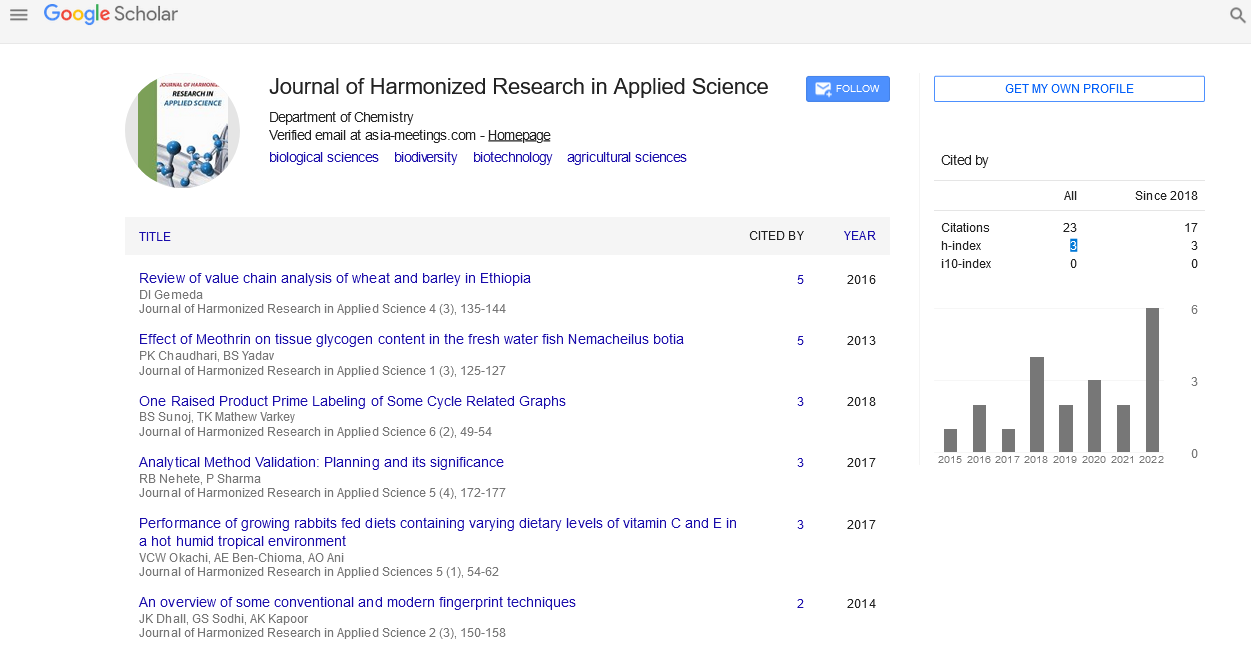Perspective - (2022) Volume 10, Issue 1
MANAGEMENT OF RENEWABLE ENERGY RESOURCES
Silvio Danese*Received: Feb 25, 2022, Manuscript No. JHRAS-22-61402; Editor assigned: Feb 28, 2022, Pre QC No. JHRAS-22-61402(PQ); Reviewed: Mar 14, 2022, QC No. JHRAS-22-61402; Revised: Mar 22, 2022, Manuscript No. JHRAS-22-61402(R); Published: Mar 29, 2022, DOI: 10.30876/2321-7456.22.10.05
Description
Power sources such as coal, oil and natural gas account for one- third of the world’s greenhouse gas emissions. It is very important to improve the standard of living by providing cleaner and more reliable electricity. In India, the demand for energy is increasing to meet the economic development plans being implemented. Supplying more energy than ever before is an essential prerequisite for a country’s economic growth. The National Power Plan, drafted by the Ministry of Energy, is separate from a detailed 10- year action plan aimed at powering the country and ensuring that citizens are powered efficiently and at a reasonable cost. I made a plan for. According to a 2017 World Resources Institute report, India accounts for almost 6.65% of the world’s total carbon emissions, the fourth highest after China (26.83%), the United States (14.36%) and the EU (9.66%). Climate change may also change the ecological balance in the world. Intended Nationally Determined Contributions (INDCs) have been submitted to the United Nations Framework Convention on Climate Change (UNFCCC) and the Paris Agreement for limiting the temperature. The latter has hoped to achieve the goal of decreasing the rise in global temperature to well below 2°C. According to a World Energy Council prediction, global electricity demand will peak in 2030. India is one of the largest coal consumers in the world and imports costly fossil fuel. Close to 74% of the energy demand is supplied by coal and oil. According to a report from the Centre for monitoring Indian economy, the country imported 171 million tons of coal in 2013-2014 and 215 million tons in 2014-2015, 207 million tons in 2015-2016, 195 million tons in 2016-2017 and 213 million tons in 2017-2018. Therefore, there is an urgent need to find alternate sources for generating electricity. Energy is an essential element for the human development and economic growth. Increase in population growth, rising standard of living and technological development are the main factors behind the increased energy demand in the last decades. As a result, the alarming trend in increasing energy expenditure indicates the serious environmental impacts caused by carbon emissions, especially associated with the use of fossil fuels. Sustainable energy production requires a low-carbon energy system that does not adversely affect society or the environment. Renewable energy sources are attracting attention and playing an important role in the decarbonization of the energy sector, as they are constantly being exchanged and made from an inexhaustible source of natural resources. Renewable energy sources include biomass, hydropower, tidal and ocean waves, solar power, wind and geothermal. There are different types of renewable energy sources may be used, their strengths, and their role in the near future. In addition, a major challenge in the transformation of today’s energy systems is to make the share of renewable energy in the power system more flexible. Wind, sun and biogas are all energy sources with their own strengths and weaknesses. Instead of a large power plant, many individual small energy generators can be used. Homes also generate energy by bringing together a large number of small energy suppliers in a virtual power project with a software platform with solar cells on the roof and a small combined heat and power plant underground. However, the energy produced by the household is rarely sufficient to cover the total energy needed throughout the year. The only option is to buy energy preferably when it is at its cheapest. There are significant savings to be made cleverly by combining independently generated energy with variable energy tariffs and storage. Renewable energy stands in contrast to fossil fuels, which are being used quickly than they are being replenished. Renewable energy resources and significant opportunities for energy efficiency exist over wide geographical areas, which are concentrated in a limited number of countries. Rapid usage of renewable energy decrease efficiency and technological diversification of energy sources would result in decrease significant energy and economic benefits. From an economic point of view, the cost of the technology behind many of this renewable energy sources, such as solar and wind, is falling. In some cases, switching to these sources will be cheaper than continuing to use current inefficient fossil fuels.










